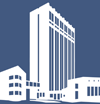Department of Cytology
| Line 1: | Line 1: | ||
| − | + | {{Cytology Header}} | |
| − | + | ||
| − | + | ||
| − | + | ||
Department of Cytology is primarily interested in the effects of cerebral ischemia on neural and synaptic plasticity in the mammalian hippocampus. Various kinds of experimental model systems used (dissociated and organotypic cultures and in vivo models) allow us to study different aspects of synaptic remodeling, which is likely to be associated with ischemia-induced changes in neurons. The contacts is highly experienced in light and electron microscopy, including ultrastructural analysis, histochemistry, immunohistochemistry (including gold-immunolabeling), computer-assisted morphometry, and 3-dimensional (3D) reconstruction. The Department is equipped with electron microscopes (Jeol 1010 and Selmi TEM100M) and light microscopes, and has sufficient facilities for cell and slice culturing and in vivo experiments. The Department pioneered the neural tissue culturing in Ukraine, and we have good experience of using various tests to estimate cell viability in the cultures. We particularly focus on quantitative analysis of morphological correlates of synaptic plasticity in normal and pathological development. Computer programs for image analysis and morphometry, both commercial (Bioquant image analysis system) and developed in the Department can be adapted to new tasks as needed. | Department of Cytology is primarily interested in the effects of cerebral ischemia on neural and synaptic plasticity in the mammalian hippocampus. Various kinds of experimental model systems used (dissociated and organotypic cultures and in vivo models) allow us to study different aspects of synaptic remodeling, which is likely to be associated with ischemia-induced changes in neurons. The contacts is highly experienced in light and electron microscopy, including ultrastructural analysis, histochemistry, immunohistochemistry (including gold-immunolabeling), computer-assisted morphometry, and 3-dimensional (3D) reconstruction. The Department is equipped with electron microscopes (Jeol 1010 and Selmi TEM100M) and light microscopes, and has sufficient facilities for cell and slice culturing and in vivo experiments. The Department pioneered the neural tissue culturing in Ukraine, and we have good experience of using various tests to estimate cell viability in the cultures. We particularly focus on quantitative analysis of morphological correlates of synaptic plasticity in normal and pathological development. Computer programs for image analysis and morphometry, both commercial (Bioquant image analysis system) and developed in the Department can be adapted to new tasks as needed. | ||
| Line 16: | Line 13: | ||
<br/>fax: +(38044) 256-2442 | <br/>fax: +(38044) 256-2442 | ||
</div> | </div> | ||
| + | |||
| + | {{Cytology Footer}} | ||
Revision as of 17:22, 16 July 2009
Department of Cytology is primarily interested in the effects of cerebral ischemia on neural and synaptic plasticity in the mammalian hippocampus. Various kinds of experimental model systems used (dissociated and organotypic cultures and in vivo models) allow us to study different aspects of synaptic remodeling, which is likely to be associated with ischemia-induced changes in neurons. The contacts is highly experienced in light and electron microscopy, including ultrastructural analysis, histochemistry, immunohistochemistry (including gold-immunolabeling), computer-assisted morphometry, and 3-dimensional (3D) reconstruction. The Department is equipped with electron microscopes (Jeol 1010 and Selmi TEM100M) and light microscopes, and has sufficient facilities for cell and slice culturing and in vivo experiments. The Department pioneered the neural tissue culturing in Ukraine, and we have good experience of using various tests to estimate cell viability in the cultures. We particularly focus on quantitative analysis of morphological correlates of synaptic plasticity in normal and pathological development. Computer programs for image analysis and morphometry, both commercial (Bioquant image analysis system) and developed in the Department can be adapted to new tasks as needed.
Contact us:
Department of Cytology
Bogomoletz Institute of Physiology
4 Acad.Bogomoltza Street,
Kiev 01024, Ukraine
tel.: +(38044) 293-2158
fax: +(38044) 256-2442
- About department :: Methods :: Equipment :: Publications :: Contacts :: Scientific collegs ::






